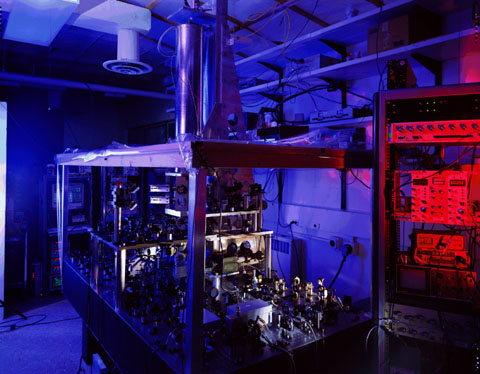Editor's Note: This article was written by one of Dr. Rabiah's correspondents for her blog, Tim. This was submitted on his behalf.
Most of us know about leap years, in which we add a day to our calendars at the end of February to adjust for the fact that Earth actually takes 365.242 days to make a full trip around the Sun, rather than exactly 365. But have you ever heard of a leap second?
On New Year's Eve this year, the world's clocks will add a single second to account for differences between atomic clocks like the one pictured below, and astronomical clocks, based on earth's unstable, slowing rotation.

The problem is that there are two definitions of the second. Historically, seconds were defined as a certain fraction of the day, or rotation of earth. When atomic clocks were invented, a new definition of the second based upon the frequency of activity in Cesium atoms emerged. Cesium's not changing, but earth's rotation is. Due to tidal acceleration and other subtle gravitational effects, earth's rotation is slowing, meaning longer days which, when divided up, make longer astronomical seconds.
Adding one second to the atomic clocks every so often helps get things back in-sync. For the first time since 2005, a second will be added this December 31 at 23:59:59 Coordinated Universal Time, meaning 5:59:59 PM in Chicago. The clocks will go, strangely enough, to 23:59:60 for one second before advancing to midnight. You can bet people will capture the strange moment on film and video, although I'm not sure anyone will add a second to their New Year's Eve countdown.
You may not feel it, but leap seconds are important for keeping things running on time?the same time. What'll you do with your extra second?
-Tim
Author's Note: Sources:
http://news.nationalgeographic.com/news/2008/02/080228-leap-year.html
http://www.ccmr.cornell.edu/education/ask/index.html?quid=1301
http://en.wikipedia.org/wiki/Tidal_acceleration
http://www.newscientist.com/article/dn16232-2008-to-be-extended-by-one-second.html
http://leapsecond.com/notes/Symmetricom-5071A-LeapSecond.jpg
http://leapsecond.com/notes/5071a-leap-second.avi
Editor's Note: For more blogs from Dr. Rabiah, visit Science Chicago's website at: http://www.sciencechicagoblog.com